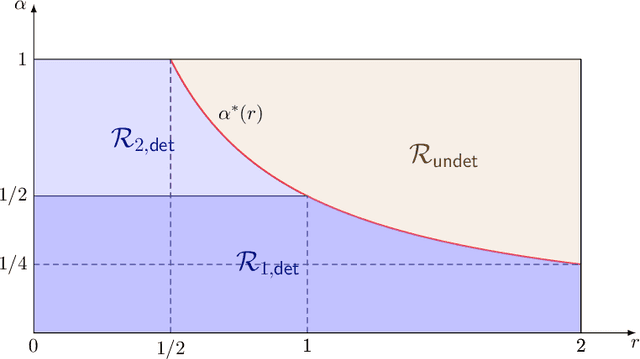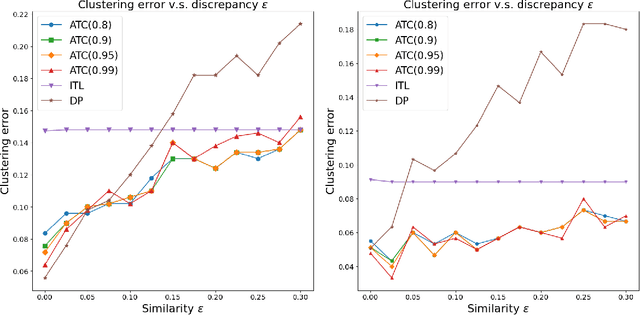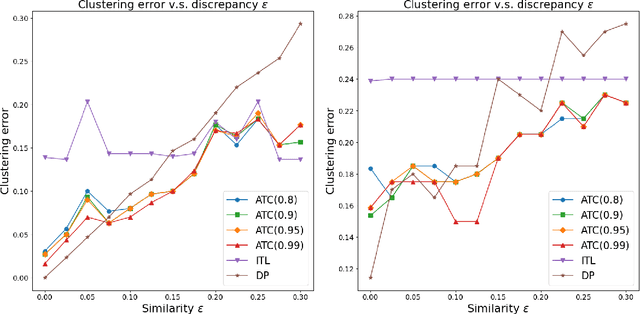Kaizheng Wang
Epistemic Wrapping for Uncertainty Quantification
May 04, 2025Abstract:Uncertainty estimation is pivotal in machine learning, especially for classification tasks, as it improves the robustness and reliability of models. We introduce a novel `Epistemic Wrapping' methodology aimed at improving uncertainty estimation in classification. Our approach uses Bayesian Neural Networks (BNNs) as a baseline and transforms their outputs into belief function posteriors, effectively capturing epistemic uncertainty and offering an efficient and general methodology for uncertainty quantification. Comprehensive experiments employing a Bayesian Neural Network (BNN) baseline and an Interval Neural Network for inference on the MNIST, Fashion-MNIST, CIFAR-10 and CIFAR-100 datasets demonstrate that our Epistemic Wrapper significantly enhances generalisation and uncertainty quantification.
Uncertainty Quantification for LLM-Based Survey Simulations
Feb 25, 2025



Abstract:We investigate the reliable use of simulated survey responses from large language models (LLMs) through the lens of uncertainty quantification. Our approach converts synthetic data into confidence sets for population parameters of human responses, addressing the distribution shift between the simulated and real populations. A key innovation lies in determining the optimal number of simulated responses: too many produce overly narrow confidence sets with poor coverage, while too few yield excessively loose estimates. To resolve this, our method adaptively selects the simulation sample size, ensuring valid average-case coverage guarantees. It is broadly applicable to any LLM, irrespective of its fidelity, and any procedure for constructing confidence sets. Additionally, the selected sample size quantifies the degree of misalignment between the LLM and the target human population. We illustrate our method on real datasets and LLMs.
A Unified Evaluation Framework for Epistemic Predictions
Jan 28, 2025Abstract:Predictions of uncertainty-aware models are diverse, ranging from single point estimates (often averaged over prediction samples) to predictive distributions, to set-valued or credal-set representations. We propose a novel unified evaluation framework for uncertainty-aware classifiers, applicable to a wide range of model classes, which allows users to tailor the trade-off between accuracy and precision of predictions via a suitably designed performance metric. This makes possible the selection of the most suitable model for a particular real-world application as a function of the desired trade-off. Our experiments, concerning Bayesian, ensemble, evidential, deterministic, credal and belief function classifiers on the CIFAR-10, MNIST and CIFAR-100 datasets, show that the metric behaves as desired.
A Similarity Measure Between Functions with Applications to Statistical Learning and Optimization
Jan 14, 2025Abstract:In this note, we present a novel measure of similarity between two functions. It quantifies how the sub-optimality gaps of two functions convert to each other, and unifies several existing notions of functional similarity. We show that it has convenient operation rules, and illustrate its use in empirical risk minimization and non-stationary online optimization.
A Particle Algorithm for Mean-Field Variational Inference
Dec 29, 2024Abstract:Variational inference is a fast and scalable alternative to Markov chain Monte Carlo and has been widely applied to posterior inference tasks in statistics and machine learning. A traditional approach for implementing mean-field variational inference (MFVI) is coordinate ascent variational inference (CAVI), which relies crucially on parametric assumptions on complete conditionals. In this paper, we introduce a novel particle-based algorithm for mean-field variational inference, which we term PArticle VI (PAVI). Notably, our algorithm does not rely on parametric assumptions on complete conditionals, and it applies to the nonparametric setting. We provide non-asymptotic finite-particle convergence guarantee for our algorithm. To our knowledge, this is the first end-to-end guarantee for particle-based MFVI.
Localized exploration in contextual dynamic pricing achieves dimension-free regret
Dec 26, 2024Abstract:We study the problem of contextual dynamic pricing with a linear demand model. We propose a novel localized exploration-then-commit (LetC) algorithm which starts with a pure exploration stage, followed by a refinement stage that explores near the learned optimal pricing policy, and finally enters a pure exploitation stage. The algorithm is shown to achieve a minimax optimal, dimension-free regret bound when the time horizon exceeds a polynomial of the covariate dimension. Furthermore, we provide a general theoretical framework that encompasses the entire time spectrum, demonstrating how to balance exploration and exploitation when the horizon is limited. The analysis is powered by a novel critical inequality that depicts the exploration-exploitation trade-off in dynamic pricing, mirroring its existing counterpart for the bias-variance trade-off in regularized regression. Our theoretical results are validated by extensive experiments on synthetic and real-world data.
Adaptive Transfer Clustering: A Unified Framework
Oct 28, 2024



Abstract:We propose a general transfer learning framework for clustering given a main dataset and an auxiliary one about the same subjects. The two datasets may reflect similar but different latent grouping structures of the subjects. We propose an adaptive transfer clustering (ATC) algorithm that automatically leverages the commonality in the presence of unknown discrepancy, by optimizing an estimated bias-variance decomposition. It applies to a broad class of statistical models including Gaussian mixture models, stochastic block models, and latent class models. A theoretical analysis proves the optimality of ATC under the Gaussian mixture model and explicitly quantifies the benefit of transfer. Extensive simulations and real data experiments confirm our method's effectiveness in various scenarios.
Distribution-Free Predictive Inference under Unknown Temporal Drift
Jun 10, 2024



Abstract:Distribution-free prediction sets play a pivotal role in uncertainty quantification for complex statistical models. Their validity hinges on reliable calibration data, which may not be readily available as real-world environments often undergo unknown changes over time. In this paper, we propose a strategy for choosing an adaptive window and use the data therein to construct prediction sets. The window is selected by optimizing an estimated bias-variance tradeoff. We provide sharp coverage guarantees for our method, showing its adaptivity to the underlying temporal drift. We also illustrate its efficacy through numerical experiments on synthetic and real data.
Credal Wrapper of Model Averaging for Uncertainty Estimation on Out-Of-Distribution Detection
May 23, 2024



Abstract:This paper presents an innovative approach, called credal wrapper, to formulating a credal set representation of model averaging for Bayesian neural networks (BNNs) and deep ensembles, capable of improving uncertainty estimation in classification tasks. Given a finite collection of single distributions derived from BNNs or deep ensembles, the proposed approach extracts an upper and a lower probability bound per class, acknowledging the epistemic uncertainty due to the availability of a limited amount of sampled predictive distributions. Such probability intervals over classes can be mapped on a convex set of probabilities (a 'credal set') from which, in turn, a unique prediction can be obtained using a transformation called 'intersection probability transformation'. In this article, we conduct extensive experiments on multiple out-of-distribution (OOD) detection benchmarks, encompassing various dataset pairs (CIFAR10/100 vs SVHN/Tiny-ImageNet, CIFAR10 vs CIFAR10-C, CIFAR100 vs CIFAR100-C and ImageNet vs ImageNet-O) and using different network architectures (such as VGG16, Res18/50, EfficientNet B2, and ViT Base). Compared to BNN and deep ensemble baselines, the proposed credal representation methodology exhibits superior performance in uncertainty estimation and achieves lower expected calibration error on OOD samples.
Model Assessment and Selection under Temporal Distribution Shift
Feb 13, 2024Abstract:We investigate model assessment and selection in a changing environment, by synthesizing datasets from both the current time period and historical epochs. To tackle unknown and potentially arbitrary temporal distribution shift, we develop an adaptive rolling window approach to estimate the generalization error of a given model. This strategy also facilitates the comparison between any two candidate models by estimating the difference of their generalization errors. We further integrate pairwise comparisons into a single-elimination tournament, achieving near-optimal model selection from a collection of candidates. Theoretical analyses and numerical experiments demonstrate the adaptivity of our proposed methods to the non-stationarity in data.
 Add to Chrome
Add to Chrome Add to Firefox
Add to Firefox Add to Edge
Add to Edge